TikTok is driving online frenzies that encourage anti-social behaviour in the real world, a BBC Three investigation reveals.
Ex-employees say the issue is not being tackled for fear of slowing the growth of the social media app's business.
These frenzies - where TikTok drives disproportionate amounts of engagement to some topics - are evidenced by interviews with former staffers, app users and BBC analysis of wider social media data. They have then led to disruption and disorder in everyday life.
The BBC's investigation found that TikTok's algorithm and design means people are seeing videos which they wouldn't normally be recommended - which, in turn, incentivise them to do unusual things in their own videos on the platform.
TikTok has previously distanced itself from outbreaks of disorder, such as the threatened looting of London's Oxford Street last month, which politicians blamed on the billion-user app.
However, the BBC has identified four episodes in recent months where disproportionate engagement on TikTok was connected to harmful behaviour:
Ex-staffers at TikTok liken these frenzies to "wildfires" and describe them as "dangerous", especially as the app's audience can be young and impressionable.
A spokesperson for TikTok told the BBC that its "algorithm brings together communities while prioritising safety". It said it recommends different types of content to interrupt repetitive patterns, removes "harmful misinformation" and reduces the reach of videos with unverified information.
I had never heard of Moscow, Idaho, before November last year. My TikTok feed became flooded with details of the murder of four students in their bedrooms while two surviving housemates slept - before the case was widely covered by the media.
Speculative theories around who committed the murders gripped TikTok, without any evidence to back them up. TikTok users were uniquely obsessed. Videos I found about the case racked up two billion views from November 2022 to August this year, compared to just 80,000 on YouTube.
Former employees say this is a product of TikTok's design. Users mostly view content through their For You page, a feed of short videos which are selected by an algorithm to appeal to each individual.
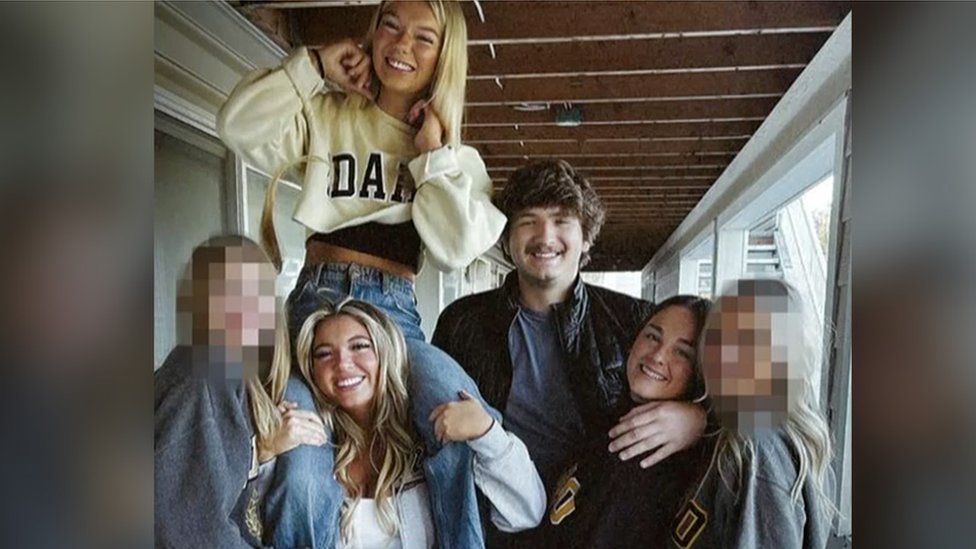
When you post a video on TikTok, it will appear on the feeds of other users who TikTok thinks could be interested in it, rather than just being promoted to your friends and followers as on some other social networks.
Depending on how users engage with that video, the algorithm might decide to push it to millions more at a speed and scale seemingly greater than on the other social media platforms. Former employees also say that, while most social media users tend to just consume content, TikTok users are much more likely to make and post their own videos.
Participation is one of TikTok's "number one priorities", according to an internal document from 2021 revealed by Chris Stokel-Walker in his book TikTok Boom. He told the BBC the company wants users "actively invested" in the app.
That element of participation can be terrifying for people like Jack Showalter, dubbed "hoodie guy" by some TikTokkers and falsely accused of involvement in the Idaho killings. His sister condemned the threats and harassment his family received. "There were so many victims created through internet sleuth videos," she said.
One TikTokker, Olivia, did not just become gripped by a drama thousands of miles from her home in Florida - she flew for more than six hours and filmed at the scene for a week. At least one of her videos reached 20 million views.
"I felt this need to go out there and dig for answers and see if I can help out in any way," Olivia told me.
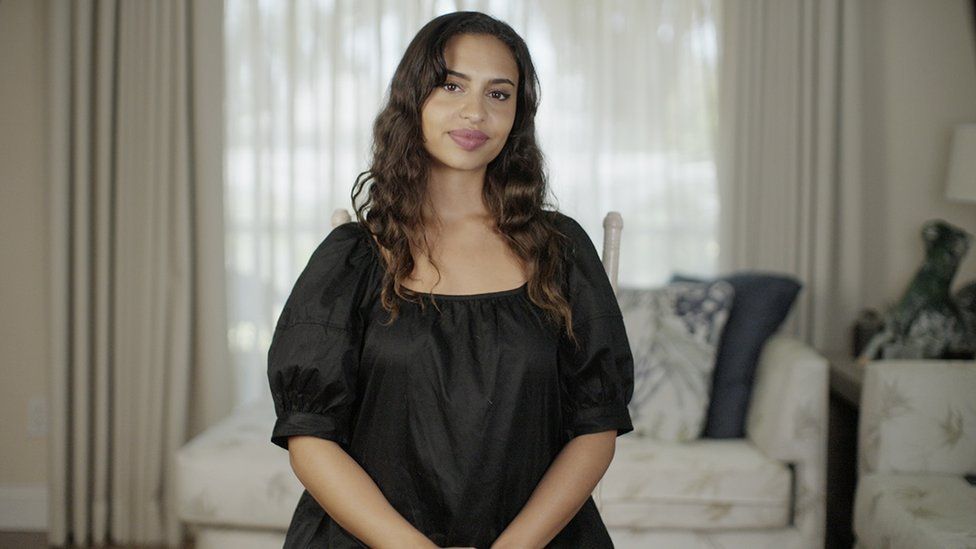
An experienced content creator who has posted videos on several true crime cases, she also acknowledges that the TikTok content "does much better" when she travels to the scene.
Olivia did not explicitly level false accusations at people. But she said that unlike traditional news media, she can post controversial claims without confirmation. "I have the power to do that," she said.
Olivia said the high levels of engagement on TikTok around subjects like the Idaho murders encourages users to create videos. "One video on TikTok could get millions of plays versus if I post the same video on Instagram, it'll get like 200 views. And it's just the algorithm of Tik Tok."
In December, Bryan Kohberger - a man not previously named by any of the online sleuths - was arrested and later charged with murder.
While Olivia was an experienced social video creator, frenzies can also draw in people who seem never to have posted content like this before - and reward them with huge numbers of views.
When 45-year-old Nicola Bulley went missing in the small village of St Michael's on Wyre in Lancashire, Heather was one of the people caught up by the way the mystery took over TikTok.
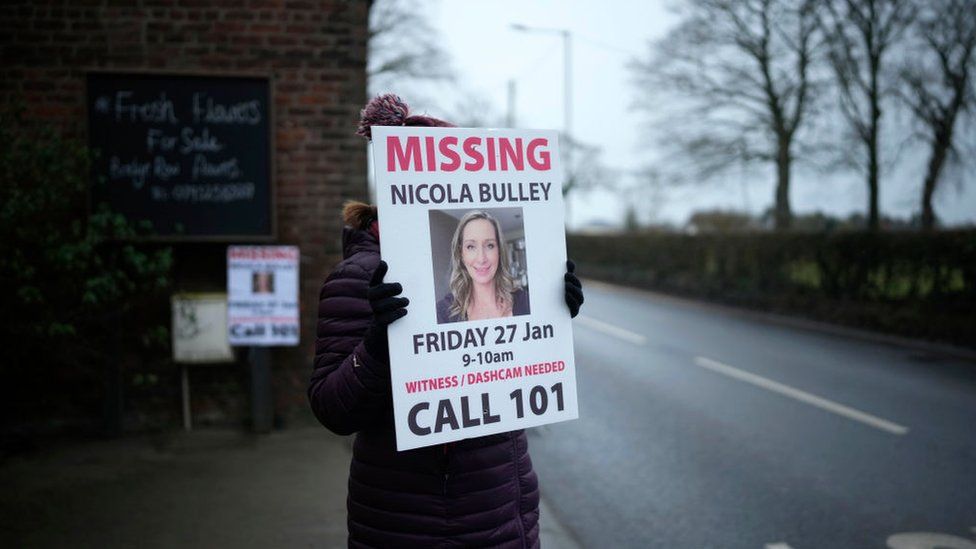
"When you see it video after video after video of the same content on the same topic, it's very easy to just think, well, I can join in. I'm just another person," Heather told me.
She posted a video which falsely implied Nicola's best friend, Emma White, had posed as the missing woman, and says it received 3.6 million views within 72 hours.
Within the first three weeks of her disappearance, I found videos using the hashtag of Nicola Bulley's name had 270 million views on TikTok, compared to far lower numbers I found across the other major social media sites.
Mainstream media was also blamed for its wall-to-wall coverage of the case, but on TikTok more explicit misinformation spread more quickly.
The BBC has seen emails Heather received from TikTok encouraging her to keep posting once her speculation had gone viral and applauding her posts as a hit.
She said the feeling of "empowerment" and "entitlement" from this attention can change people's behaviour.
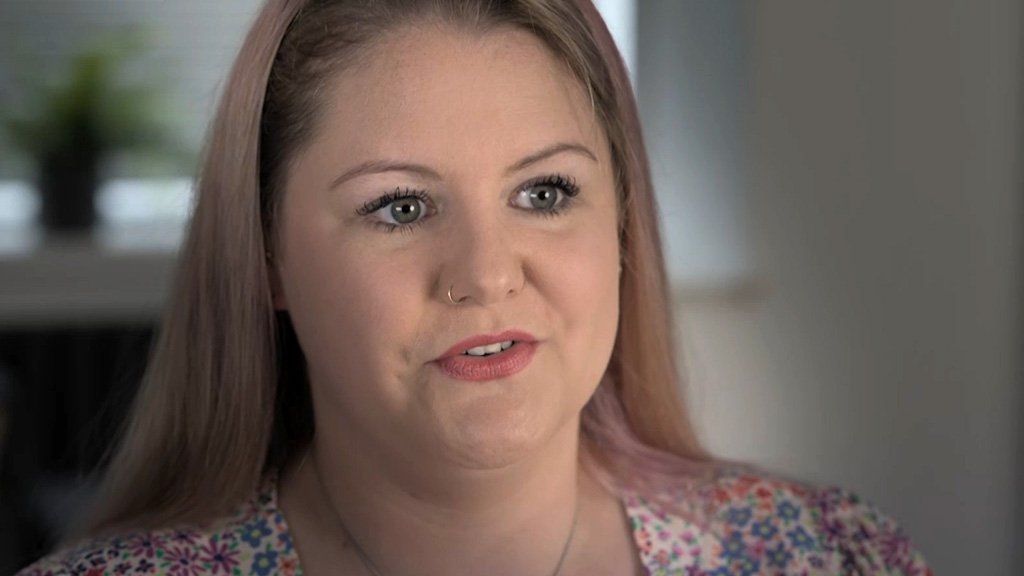
Now she said she regrets her part in the frenzy and has deleted her videos.
Heather never headed to the scene of the disappearance, but many other TikTokkers did. The police criticised the way people were interfering with the case to film social media videos, eventually issuing a dispersal order, which allows officers to remove people from the area to prevent anti-social behaviour.
Nicola Bulley's body was found on 17 February in the river not far from where she disappeared. An inquest determined her death was due to accidental drowning.
A spokesperson for TikTok told the BBC that users "naturally" took more of an interest in stories at "moments of national conversation, which are intensified by 24-hour news reporting". They also pointed out that the BBC has posted on TikTok about many stories like this.
Events in British schools and on the streets of France have shown how TikTok can help disturbances escalate and spread from place to place.
In February 2023, a protest about Rainford High School in Merseyside checking the length of girls' skirts was posted on TikTok. Within three days, students at over 60 schools had held and filmed their own version of the protest. After a week, students at over 100 schools had got involved.
In some cases, they also got out of hand: windows were smashed, trees were set on fire and teachers were assaulted.

"I feel like what TikTok is enabling people to do now is to take one thing that's viral in one school and transport it to like the whole region and make it a competition about who can up the other schools and make it more extreme," said Jasmine, a former TikTok moderator.
According to TikTok, most of the videos showed pupils engaging in peaceful demonstrations - but teachers and students I spoke to were concerned about the cumulative effect of all the videos.
During the school protests, I decided to see what type of content TikTok's algorithm might recommend to an undercover account pretending to belong to a 15-year-old boy with typical interests, such as football.
After being recommended videos about football and gaming, the fourth video I was shown was from a 25-year-old influencer called Adrian Markovac. As well as promoting self-improvement, some of his videos encourage rebellion against school rules on uniform, homework and asking to go to the toilet, as well as calling teachers offensive names.
Comments under his videos included some teenagers in the UK saying they had been suspended or excluded from school after following Mr Markovac's advice.
In an interview with the BBC, Mr Markovac said he encourages young people to "rebel against ridiculous rules", but he said he could not be held responsible for the poor decisions of a minority of viewers.
A few months after the school protests, riots spread across Paris and the rest of France after the death of 17-year-old Nahel M, who was shot by a police officer, who was later charged with homicide. The French president Emmanuel Macron levelled the blame for the disorder at TikTok and Snapchat.
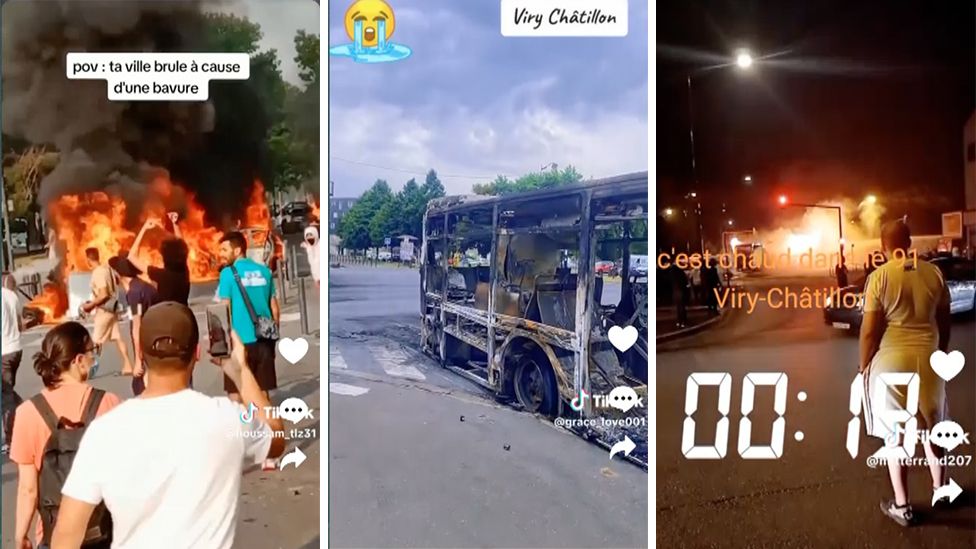
But was there another TikTok frenzy at play? Or was the French President just deflecting responsibility?
The sense of injustice over Nahel's death meant riots began without the influence of social media.
But the attention I found it received on TikTok was much higher compared to other platforms. I found public videos on Snapchat using Nahel's name with 167,700 views (that doesn't include some which may have been circulated in private chats). On TikTok, public videos using the hashtag racked up 850 million views.
In one town, Viry-Châtillon, on the outskirts of Paris, videos showed a bus on fire and a ransacked newsagents. Jean-Marie Vilain, the mayor, said demonstrations were rare in the town.
But what was "incredible and dramatic" in his view was that the riots spread to "the provinces, in cities, in small towns where nothing is happening, where everything is fine" - as far afield as Provence and Guadeloupe.

"Unfortunately, once the riots started, TikTok became a tool to show, here, this is what I'm capable of doing. Can you do better?" Mr Vilain told me. His claim is backed up by videos I found on TikTok, which became more extreme as the riots went on.
From speaking to protestors, Mr Vilain also said seeing acts of destruction widely shared on TikTok "became the norm" for some people. TikTok users sharing this content who I messaged said the same.

Explore our curated content, stay informed about groundbreaking innovations, and journey into the future of science and tech.
© ArinstarTechnology
Privacy Policy